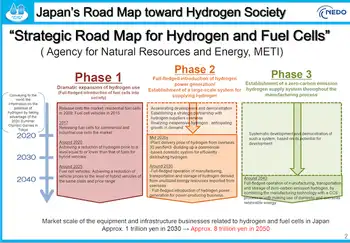You want fries with that battery?
By Toronto Star
NFPA 70e Training - Arc Flash
Our customized live online or in‑person group training can be delivered to your staff at your location.

- Live Online
- 6 hours Instructor-led
- Group Training Available
About the size and shape of a standard 60-watt incandescent bulb, this device is surrounded by four tiny solar cells that charge an internal AA-sized battery during the day. At night, the battery powers five light-emitting diodes LEDs for between two and four hours.
Hong Kong-based Nokero International Ltd. is marketing the bulb as ideal for deployment in developing countries where electricity infrastructure doesn't exist. During the evenings, many villages are simply without grid power for lights. Around the world, we're talking 1.6 billion in the dark.
Those who can afford it will turn instead to kerosene lamps, which are a major hazard. Used indoors, the resulting emissions are dangerous to inhale and also a fire risk. Hence the company's name "Nokero" – no kerosene.
The Nokero bulbs aren't cheap at $15 each, but the idea is that non-governmental organizations can purchase them and deploy them where needed, including disaster zones.
Around the world, there's no shortage of individuals and companies trying to develop cheaper, safer and cleaner ways for developing countries to get the basic necessities of life – light, water, heat and food – without having to build the multibillion-dollar infrastructures to support them. Solar ovens and children's carousels that pump well water are two other examples.
Here's another one: potato power.
That's right. Take a potato, boil it, cut it in four or five slices, and wedge each slice between a thin zinc plate on one side and a copper plate on the other. Connect them by alligator clips to a couple of LED lights and, well, they light up. More than that, they'll stay lit up for several hours.
I'm not making this up. The details were published recently in the Journal of Renewable and Sustainable Energy and were mentioned this month in the journal Nature. Boris Rubinsky, a professor of mechanical engineering and biophysics at the University of California, Berkeley, emphasized that the approach isn't new. In fact, it's a common experiment in high school science classes.
What Rubinsky and his colleagues at the Hebrew University of Jerusalem discovered was a way to boost the electrical output of a potato 10-fold by simply boiling the tuber while preparing dinner.
"We were hesitant about publishing it because it sounds so trivial. I mean, a boiled potato? On the other hand, it's very valuable for many people around the world."
Rubinsky's main research interest is focused on developing self-powered devices, such as pacemakers, that would use the human body as their power source.
It seems futuristic, but the concept goes back two centuries when Alessandro Volta and Luigi Galvani began experimenting with what they called "animal electricity." They measured the flow of electricity when they sandwich a sample of biological tissue, such as a frog's leg, between two pieces of metal "electrodes" – one made of zinc, the other of copper.
The salt in the tissue, which can come from an animal or vegetable, functions the same as an electrolyte in a battery and is often called a "salt bridge". The electrolyte contains free-flowing ions, which flow from the zinc plate to the copper plate. This flow of ions is what creates electricity.
But ions flow differently depending on the substance of the electrolyte. The flow is different, for example, when comparing healthy tissue to cancerous tissue. This has allowed scientists to develop new ways to detect tumours.
In the case of the potato, the researchers discovered that the simple act of boiling the tuber increased electrical output. "Boiling reduces the internal resistance of the living tissue by rupturing the cells' membranes, thus allowing for higher current flow between the zinc and copper electrodes," explained study co-author Haim Rabinowitch, a professor at Hebrew U.
Leaving a potato in a pot of water in the hot sun for a few minutes will also do the trick.
It's a simple but important observation because it shows for the first time that you can manipulate the internal resistance of organic tissues to dramatically increase electrical output. The result is a cheap, makeshift battery that would make MacGyver proud.
"It can produce the same amount of electricity as one AA battery for about 50 per cent less cost, and if you were to produce light with an LED from this battery, then the cost will be six times less than the cost of producing the same amount of light from a kerosene lamp," Rubinsky told me.
He said a dozen potatoes prepared this way could also charge a cell phone.
But can you eat the potatoes afterward?
"During the generation of electricity zinc ions are released from the electrode into the potato tissue," replied Rabinowitch. "We cannot make any statement concerning the edibility of the potato slice, as excess zinc is dangerous."
Still, people do take zinc supplements to boost the immune system. Recent health and pharmacological studies indicate that zinc could, as Rabinowitch puts it, "turn out to be the calcium of the twenty-first century."
It would prove a nice added benefit, kind of like potatoes with gravy. And yes, in case you were wondering, this could work for other vegetables and plants. "We've done it with a cactus," Rubinsky says.
Mmmm... boiled cactus.











